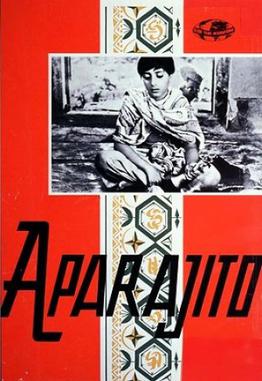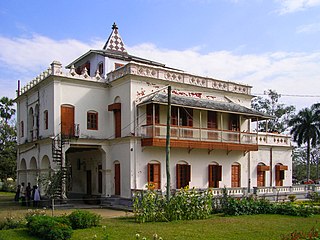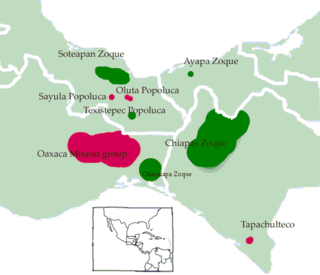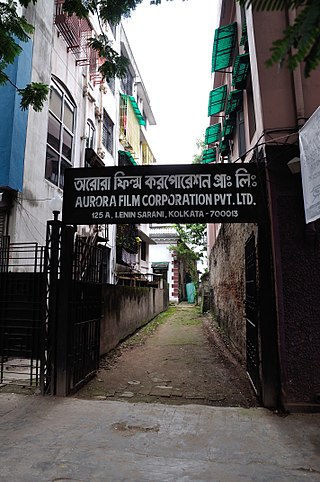
Rabindra Sangeet, also known as Tagore Songs, are songs from the Indian subcontinent written and composed by the Bengali polymath Rabindranath Tagore, winner of the 1913 Nobel Prize in Literature, the first Indian and also the first non-European to receive such recognition. Tagore was a prolific composer with approximately 2,232 songs to his credit. The songs have distinctive characteristics in the music of Bengal, popular in India and Bangladesh.

Aparajito is a 1956 Indian Bengali-language drama film written and directed by Satyajit Ray, and is the second part of The Apu Trilogy. It is adapted from the first half of Bibhutibhushan Bannerjee's novel Aparajito. It starts off where the previous film Pather Panchali (1955) ended, with Apu's family moving to Varanasi, and chronicles Apu's life from childhood to adolescence in college.

Charulata is a 1964 Indian drama film written and directed by Satyajit Ray. Based upon the novel Nastanirh by Rabindranath Tagore, it stars Soumitra Chatterjee, Madhabi Mukherjee and Sailen Mukherjee. The film is considered one of the finest works of Ray.

Sukumar Ray was a Bengali writer and poet from the Indian subcontinent. He is remembered mainly for his writings for children. He was the son of children's story writer Upendrakishore Ray Chowdhury and the father of Indian filmmaker Satyajit Ray.

Ghare Baire is a 1984 Indian Bengali-language romantic drama film directed and written by Satyajit Ray. Based on Rabindranath Tagore's novel of the same name, starring Soumitra Chatterjee, Victor Banerjee, Jennifer Kendal and Swatilekha Chatterjee. The film has a complex portrayal of several themes including nationalism, women emancipation, spiritual and materialistic take on life, tradition versus modernism, and others.

The works of Rabindranath Tagore consist of poems, novels, short stories, dramas, paintings, drawings, and music that Bengali poet and Brahmo philosopher Rabindranath Tagore created over his lifetime.

The Isthmian script is an early set of symbols found in inscriptions around the Isthmus of Tehuantepec, dating to c. 500 BCE – 500 CE, though with dates subject to disagreement. It is also called the La Mojarra script and the Epi-Olmec script.

Satyajit Ray (1921–1992), a Bengali film director from India, is well known for his contributions to Bengali literature. He created two of the most famous characters in Feluda the sleuth and Professor Shanku the scientist. He wrote several short novels and stories in addition to those based on these two characters. His fiction was targeted mainly at younger readers, though it became popular among children and adults alike.

Rabindranath Tagore is a 1961 Indian documentary film written and directed by Satyajit Ray about the life and works of noted Bengali author Rabindranath Tagore. Ray started working on the documentary in early 1958. Shot in black-and-white, the finished film was released during the birth centenary year of Rabindranath Tagore, who was born on 7 May 1861. Ray avoided the controversial aspects of Tagore's life in order to make it as an official portrait of the poet. Though Tagore was known as a poet, Ray did not use any of Tagore's poetry as he was not happy with the English translation and believed that "it would not make the right impression if recited" and people would not consider Tagore "a very great poet," based on those translations. Satyajit Ray has been reported to have said about the documentary Rabindranath Tagore in his biography Satyajit Ray: The Inner Eye by W. Andrew Robinson that, "Ten or twelve minutes of it are among the most moving and powerful things that I have produced."

The Inner Eye is a 1972 short documentary film made by Satyajit Ray on Benode Behari Mukherjee, a blind artist and a teacher from Visva-Bharati University, a university founded by Rabindranath Tagore at Santiniketan. The twenty minutes documentary features the life and works of Mukherjee in the form of paintings and photographs, starring himself. The documentary covers his journey from childhood till his blindness along with much of his works and features his words, "Blindness is a new feeling, a new experience, a new state of being". The documentary was awarded as Best Information Film (Documentary) at 20th National Film Awards in 1972.
Nastanirh is a 1901 Bengali novella by Rabindranath Tagore. It is the basis for the noted 1964 film Charulata, by Satyajit Ray.

Rabindranath Tagore was an Indian polymath who was active as a poet, writer, playwright, composer, philosopher, social reformer, educationist and painter during the age of Bengal Renaissance. He reshaped Bengali literature and music as well as Indian art with Contextual Modernism in the late 19th and early 20th centuries. Author of the "profoundly sensitive, fresh and beautiful" poetry of Gitanjali, he became in 1913 the first non-European and the first lyricist to win the Nobel Prize in Literature. Tagore's poetic songs were viewed as spiritual and mercurial; where his elegant prose and magical poetry were widely popular in the Indian subcontinent. He was a fellow of the Royal Asiatic Society. Referred to as "the Bard of Bengal", Tagore was known by sobriquets: Gurudeb, Kobiguru, and Biswokobi.

Santosh Dutta was a Bengali actor, best known for playing the character of Jatayu in Satyajit Ray's Feluda movie series Sonar Kella and Joi Baba Felunath.

The Zoque languages form a primary branch of the Mixe–Zoquean language family indigenous to southern Mexico by the Zoque people.

Shesher Kabita is a novel by Rabindranath Tagore. The novel was serialised in 1928, from Bhadra to Choitro in the magazine Probashi, and was published in book form the following year. It has been translated into English as The Last Poem and Farewell song.

Satyajit Ray was an Indian director, screenwriter, documentary filmmaker, author, essayist, lyricist, magazine editor, illustrator, calligrapher, and composer. Ray is widely considered one of the greatest and most influential film directors in the history of cinema. He is celebrated for works including The Apu Trilogy (1955–1959), The Music Room (1958), The Big City (1963) and Charulata (1964) and the Goopy–Bagha trilogy.

Kadambari Devi was the wife of Jyotirindranath Tagore and daughter-in-law of Debendranath Tagore. She was ten years younger than her husband, whom she married on 5 July 1868, at the age of nine. Her husband arranged for her to be educated. She was nearly the same age as her brother-in-law Rabindranath Tagore, being only two years older than him.

Aurora Film Corporation is a film production company based in Kolkata, West Bengal, India, and primarily involved in producing Bengali films. Aurora has produced and distributed several landmark Bengali-language films including Satyajit Ray's Pather Panchali.
Rabindranath Tagore was a Bengali polymath who worked as a poet, writer, playwright, composer, philosopher, social reformer and painter. He reshaped Bengali literature and music as well as Indian art with Contextual Modernism in the late 19th and early 20th centuries. Author of the "profoundly sensitive, fresh and beautiful" poetry of Gitanjali, he became in 1913 the first non-European and the first lyricist to win the Nobel Prize in Literature. His novels, poems, plays and short stories have been made into forty-four films. Moreover, he has been featured as a lyricist and songwriter in more than one hundred films. The following is a list of films made from Tagore's works:

















